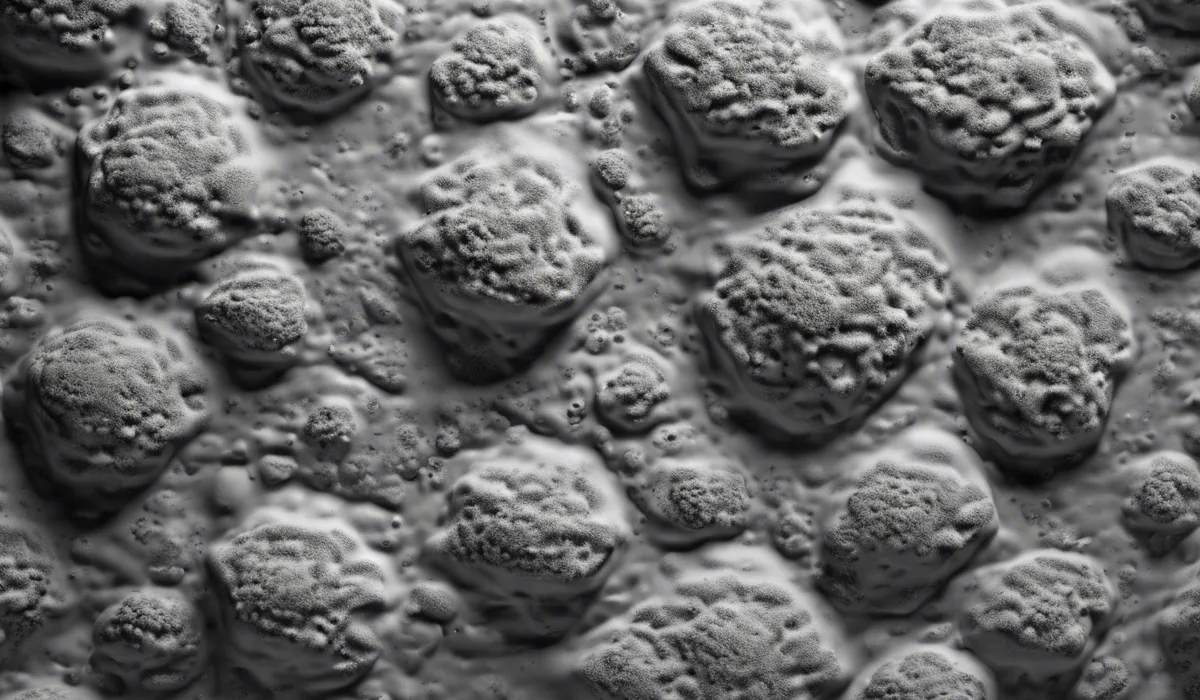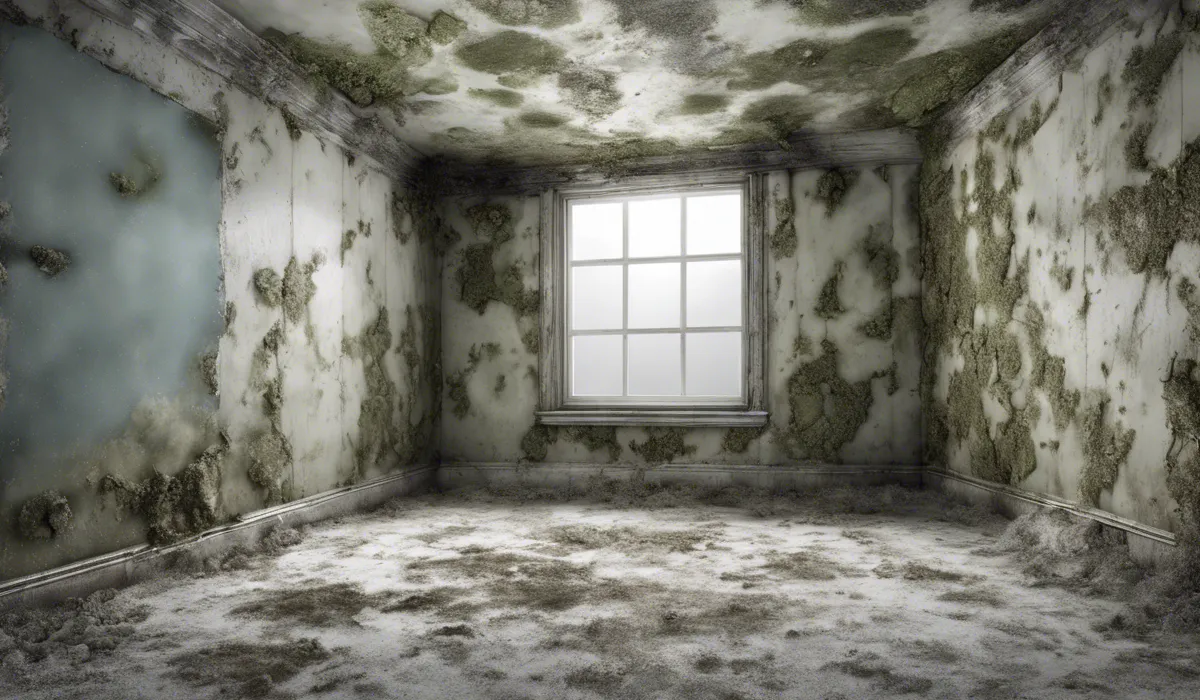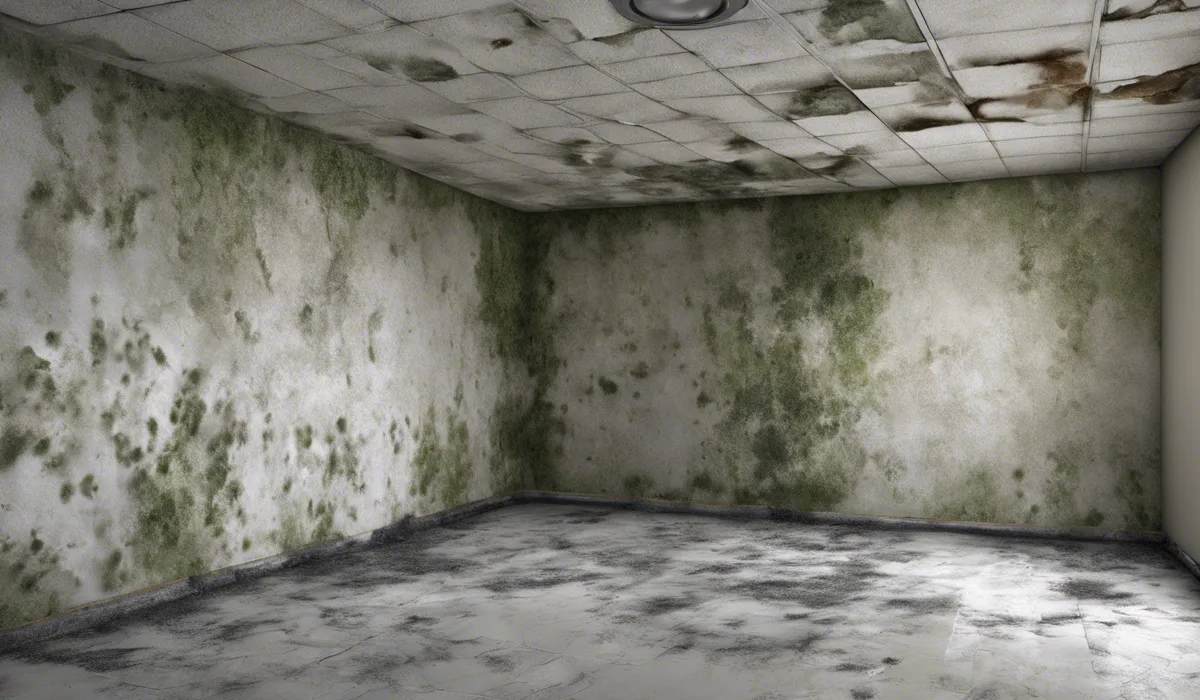To stop mold from growing, control humidity levels below 60%, promptly repair leaks, ensure good ventilation, and clean surfaces with mold-resistant products. Regularly inspect potential problem areas like bathrooms and basements.
Understanding Mold and Its Causes

Definition of Mold
Mold is a type of fungus that can grow indoors and outdoors. It comes in various colors and grows in colonies.
Mold reproduces through tiny spores that travel through the air. When these spores land on a damp spot, they can start to grow and spread.
Factors Aiding Mold Growth
Mold needs certain conditions to grow. Understanding these can help us prevent mold from taking hold in our homes.
Humidity Levels
Mold loves moisture. High humidity levels provide the perfect environment for mold to grow. Keeping indoor humidity below 60% can help stop mold in its tracks.
Temperature
Warm temperatures can also promote mold growth. Mold often thrives in temperatures between 77°F and 86°F. Maintaining a cooler environment can discourage mold development.
Light Exposure
While some molds require light to grow, others can grow in darkness. This means that mold can grow in well-lit and dark areas of your home if other conditions are right.
Ventilation
Good airflow is essential in preventing mold. Areas with poor ventilation keep moisture trapped, allowing mold to flourish.
Common Mold Habitats
Mold can grow in many places around the home. Here are some common spots to watch out for:
Bathrooms and Kitchens
These areas are often moist, making them prime spots for mold. Always use exhaust fans and wipe down surfaces to keep these areas dry.
Basements and Attics
These less-trafficked areas can harbor mold without you noticing. Check them regularly and keep them well-ventilated.
Carpets and Upholstery
Soft materials can absorb moisture and become moldy. Clean spills immediately and consider using mold-resistant fabrics.
Preventive Measures to Control Mold Growth

Managing Humidity and Temperature
To prevent mold, it’s crucial to control your home’s climate.
Using Dehumidifiers and Air Conditioners
Dehumidifiers and air conditioners reduce moisture in the air. Use these tools to keep humidity levels in check, especially during hot, humid months.
Improving Insulation and Ventilation
Proper insulation helps maintain temperature and reduce condensation. Make sure your home is well-ventilated to allow moisture to escape.
Cleaning and Maintenance Routines
Regular cleaning is vital in the fight against mold. Here’s how to keep your home mold-free:
Keeping Areas Dry
Wet areas are breeding grounds for mold. Dry any wet surfaces quickly and fix leaks as soon as they’re discovered.
Targeting Mold-Prone Zones
Focus on rooms like bathrooms and basements during your cleaning. Use the right cleaners to prevent mold from settling in.
Mold-Resistant Solutions
Using the right products can help stop mold before it starts.
Paints with Mold Inhibitors
Consider using mold-inhibiting paints in your home. These paints can prevent mold growth on walls and ceilings.
Building Materials That Resist Mold
When renovating, choose materials that are resistant to mold. These can include mold-resistant drywall or tiles for areas with high moisture.
Remediation Strategies for Existing Mold Issues

Safety First When Addressing Mold
Before tackling mold, it’s important to be safe.
Using Protective Gear
Wear gloves, masks, and goggles to protect yourself from mold spores. Ensure the area is well-ventilated before starting.
Knowing When to Call Professionals
If the mold area is large or if you’re sensitive to spores, it’s best to call in a professional mold remediation team.
Step-by-Step Mold Removal
When it’s safe to do it yourself, follow these steps to remove mold:
Choosing the Right Cleaners
Use a cleaner designed for killing mold. You can also use natural solutions like vinegar or baking soda.
Disposing of Moldy Items
Remove and dispose of any materials that are too moldy to clean. Seal them in plastic bags to prevent spores from spreading.
Preventing Mold From Coming Back
After removing mold, take steps to ensure it doesn’t return:
Conducting Regular Inspections
Check your home often for signs of mold, especially in high-risk areas. Early detection can prevent major infestations.
Responding Quickly to Moisture
Address water leaks and spills immediately. Quick action can stop mold from getting a foothold in your home.
FAQs About Stopping Mold Growth
What humidity level should I maintain to prevent mold growth?
To prevent mold growth, maintain indoor humidity levels below 60%.
How quickly should I address leaks to prevent mold?
Leaks should be repaired promptly, ideally as soon as they are detected, to prevent mold from taking hold.
What can I do to ensure good ventilation to stop mold growth?
Use exhaust fans in bathrooms and kitchens, ensure that your home has adequate venting such as attic vents, and consider using dehumidifiers in damp areas.
What type of products should I use to clean surfaces to prevent mold?
Clean surfaces with mold-resistant products, such as those containing bleach or other fungicides, to inhibit mold growth.
Where should I regularly inspect for mold to stop it from growing?
Regularly inspect areas prone to moisture, such as bathrooms, basements, around windows, and anywhere there has been a history of leaks.
Final Thoughts
To prevent mold growth, maintaining humidity levels below 60% is crucial. Address leaks immediately, ensure adequate ventilation, and use mold-resistant products for cleaning surfaces.
Regular inspections of prone areas like bathrooms and basements are essential for early detection and prevention of mold.
